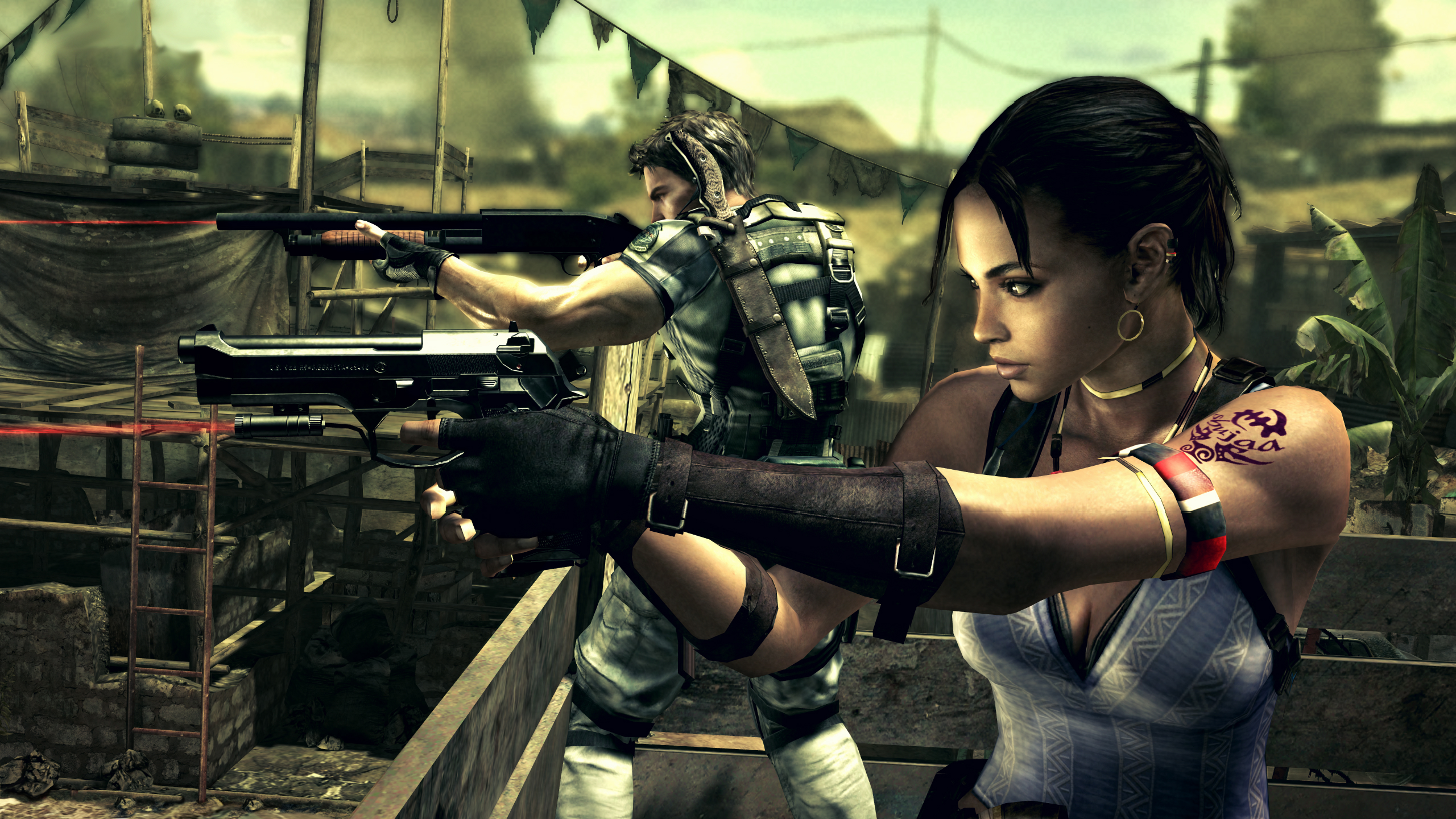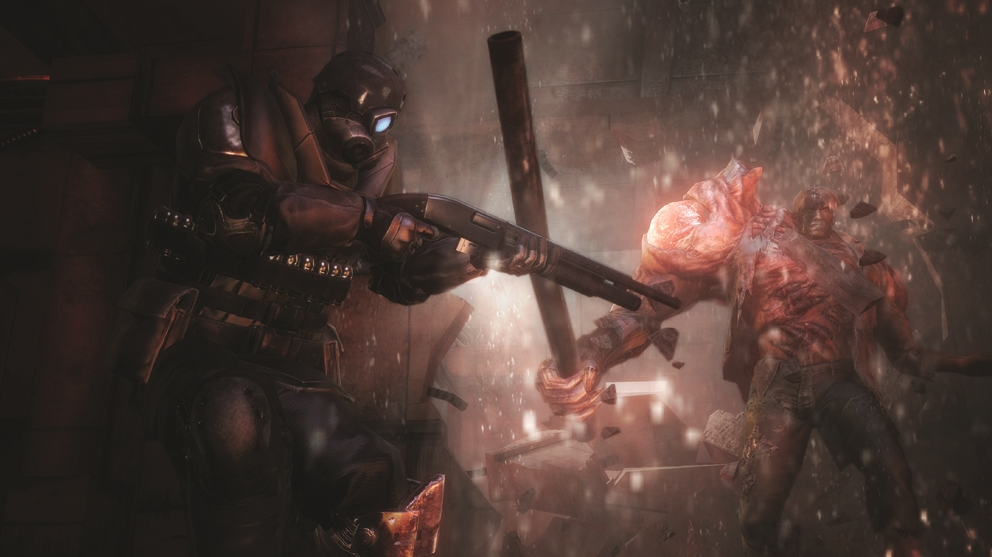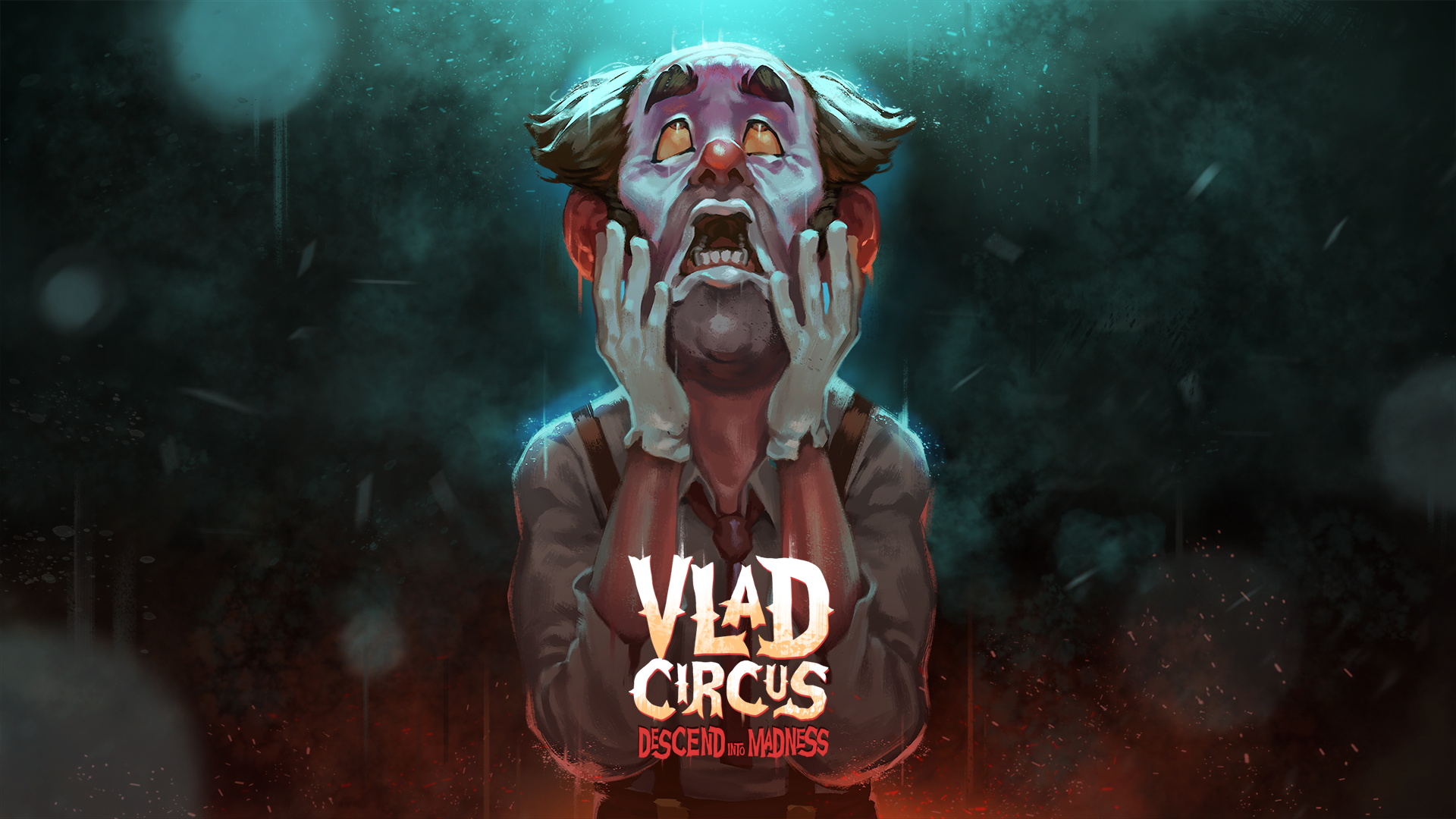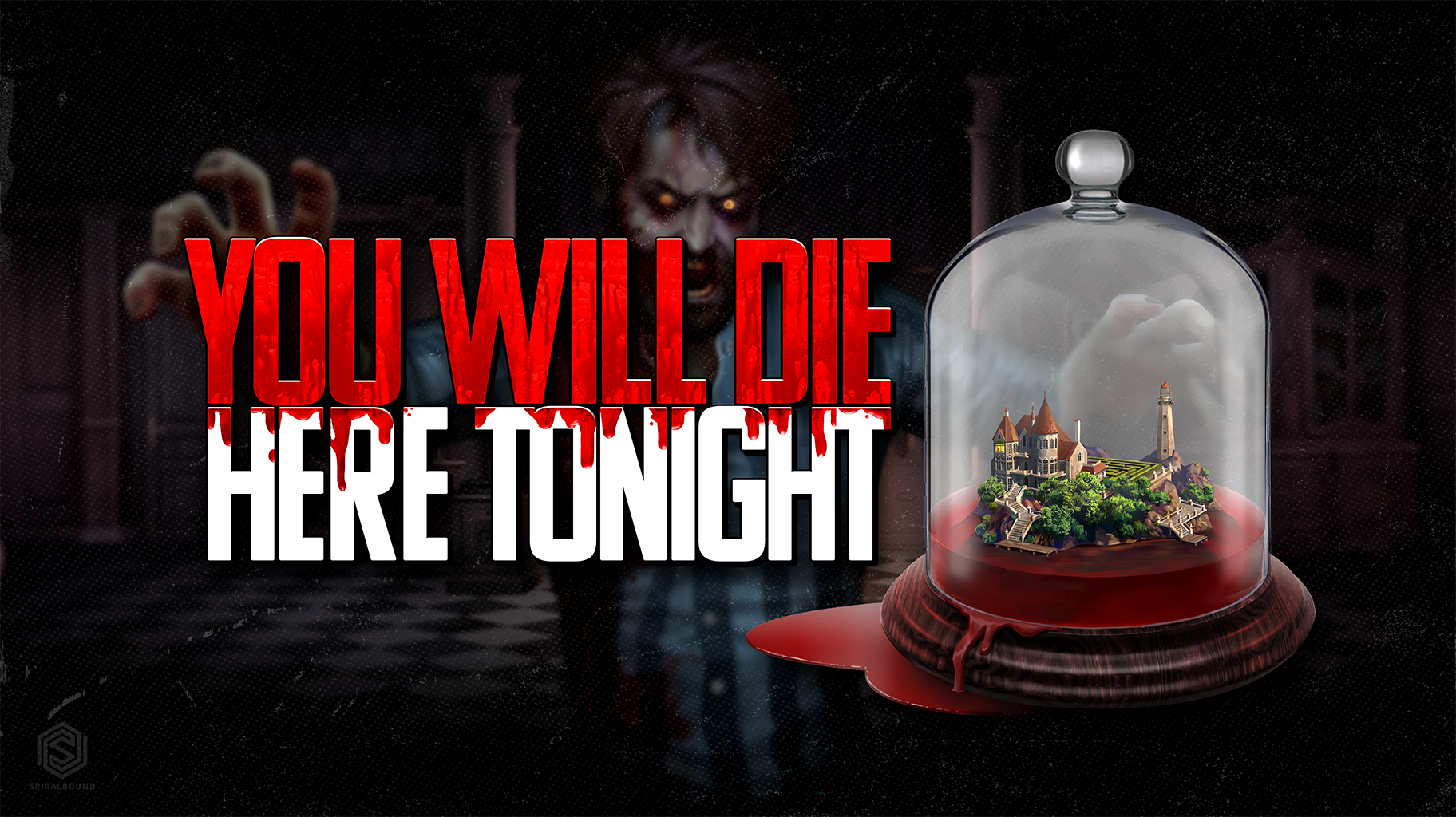
Why the AAA Industry (Still) Isn’t Making Survival Horror Games
It often feels like the AAA industry has it in for survival horror. Once upon a time, horror was the darling of the digital entertainment world, a genre that pushed both the artistic and technical capabilities of games to new heights. The first Resident Evil used clever digital trickery to present impressively detailed 3D worlds, whilst the Silent Hill series delivered some of the most atmospheric and story-rich experiences ever seen in a videogame. Resident Evil 4’s influence on third-person shooter design can still be felt today, particularly in the now virtually universal over-the-shoulder perspective it pioneered. Depending on how you stretch the ‘horror’ definition, you could even argue that between the demon-slaying Doom and the vent-crawling Half-Life, horror had a hand in defining the world of first-person shooters.
That halcyon era is a far cry from the situation we have today. When it comes to blockbuster titles, there’s a sense that horror fans are the beggars at the table, hungrily licking their lips whilst they wait for scraps to come their way. Sure, sometimes we get pretty good scraps (games are a multi-billion dollar industry, after all), but it’s been a long while since there’ve been regular servings of the main dish.

Even as I type this, I can hear the objections coming. ‘But about what Resident Evil 7 and/ or 8?’ will be the most common ones. Well, what about them? Resident Evil is a bankable franchise with instant brand recognition; a popular series that was always going to crank out games regardless of the state of the rest of the genre. Even accepting its foundational role in survival horror, the health of one IP doesn’t equate to the health of the category of games it created.
In a similar vein, just because we get other occasional AAA horror games doesn’t mean that horror at large is back and swinging. We’ve had many false dawns over the years, where the release of a new title is supposed to herald ‘the rebirth of survival horror’. It never turned out to be quite true. The Dark Pictures Anthology is something tied very specifically to Halloween; a late-night B movie experience that exists nearly solely to serve that holiday market. Alien: Isolation was a flash in the pan; an excellent title to be sure, but a one-off that was still, at the end of the day, part of an iconic preexisting IP. Dead Space descended into co-op microtransaction action, and its impending reboot is really operating under the same logic of the Resident Evil series, just to a lesser degree; a relatively safe IP with enough brand recognition to merit another installment. Never has there been this opening of the floodgates, where horror gamers can comfortably rely on a regular slew of new big-budget IPs each year. Without looking, I can virtually guarantee that there‘s a solid pipeline of upcoming multiplayer military shooters, for example. I can’t say the same thing about horror games.

The big question in all this is ‘why?’ How has horror gone from one of gaming’s top dogs to the runt of the litter? More importantly, is there any way this trend can be reversed? In this opinionated diatribe masquerading as solid business analysis, I’m going to try and answer both these questions.
Bigger is Not Necessarily Bigger
Probably the best place to start is to admit that horror was always a bit of a niche genre. Even during its golden age from about the mid-’90s to the mid-2000s, there were far more games coming out in the sci-fi, military, or fantasy categories than there were in the horror space. This wasn’t really a problem; what changed was the cost of doing business.
It’s no coincidence that the golden era of survival horror coincided with the time of the fifth and sixth console generations. The sixth-generation – particularly the Gamecube and PlayStation 2 – are platforms fondly remembered for their vast array of games, with the latter still holding the record for largest games library in console history. This was only partly because of the technology’s impressive technical capabilities. Just as importantly, it was also relatively cost-effective to develop for. Publishers and developers could often produce a title for a few million dollars; hardly spare change, but small enough in business terms to be a manageable risk. Development costs could be recouped even with only middling success, whilst a flop wouldn’t spell the death of a studio.

That situation no longer holds. The greater capabilities of each successive console generation have pushed the cost of making games up and up, increasing both the risk a project carries and the number of sales needed before the break-even point is reached. At the same time, the retail price of games has remained largely static. The games space is also just that much more crowded than it was in the early noughties, as indie gaming and particularly mobile games have joined the fray. In short, studio-made, non-mobile games are riskier, costlier, and more complex to develop than they once were, whilst still commanding the same per-unit price in a landscape of fiercer competition.
The result of all these factors has been a bifurcation of the traditional games space. On the one hand, there’s the crowded indie scene that’s big on passion but low on finance. On the other, there’s the rarefied arena of gargantuan AAA studios. The squeezed middle has been the world of mid-tier or ‘AA’ development that once proliferated in the days of the PS2. Horror has been a casualty of this process. As in the world of B-movie cinema, horror games thrived in an environment where there was sufficient budget to do justice to a creative vision, but not so much that risk management became a priority. AAA games are highly risk-averse, aiming for the broadest possible market and heavily preferring established franchises over new IPs.
Business vs. Bogeymen
Horror isn’t the only area where AAA risk aversion has hit hard. But the genre has several unique features that seem to make it an even less palatable investment proposition. Firstly, there’s the problem of staleness. The most successful franchises follow a reliable formula, but formula and predictability are the exact opposite of one of horror’s key elements; the fear of the unknown. Resident Evil is the textbook example of this. The series has fallen into a rut several times over the course of its history. Gameplay patterns have become too repetitive, whilst the mystery and simple setups of earlier games have given way to a mess of plot threads and extended cast lists. It’s only by stripping out established canon with Resident Evil 4 and Resident Evil 7 that the series has managed to once again deliver tension and chills.

More seriously, there are very few ways to monetize survival horror games outside of a traditional upfront purchase. Most modern monetization methods are built around games with a core loop designed for repeat play sessions, or with a multiplayer component, or both. Microtransactions for cosmetics, XP, or gear may work in something like Fortnite and Team Fortress 2; not so much for a linear horror game, as Dead Space 3 found out. DLC also presents difficulties. A good survival horror experience needs all of its components – environments, story, gameplay – working in tandem to deliver a compelling experience. Cutting corners by reusing such assets, or tacking extra story bits on, can just as often cheapen the initial experience as enhance it. Compare the amount of work needed to make a skin for a multiplayer game with that of creating a piece of story DLC, and you start to see the disparity in terms of risk and resources.

Finally, survival horror is a highly platform-specific genre. In particular, it’s a genre that’s never really clicked on the mobile scene. There may be many reasons for this, but one obvious factor presents itself. Survival horror is an intensely narrative-driven affair, and like any good story, it needs an audience that’s in the right frame of mind to appreciate it. The personal experience horror gives players is something that’s far easier to absorb on a PC or console, on your own, with the blinds drawn down, rather than on a small screen when you’re on the fly. It’s hard to imagine people immersing themselves in Silent Hill’s foggy streets, say, in the middle of a bustling coffee shop in broad daylight.
Hope for Horror?
With the inherent challenges that come from doing a survival horror title, is there any chance that we’ll ever see another golden age of survival horror? If we’re speaking in terms of the AAA industry, I’ve got to say probably not. We’ll continue to see remasters, Resident Evil entries, and a few fad-following horror titles here and there, but it’ll be an uphill battle every step of the way. With the plethora of modern monetization methods currently available, AAA budgets the size that they are, and the corresponding degree of conservatism from AAA publishers, the trend towards games as a service model and the tendency to only greenlight ‘safe’ (i.e. mass-market) projects will only continue.
So where’s the good news? Well, it’s that I still think there’s a solid investment case to be made for developing horror games. And this is not merely in spite of the idiosyncrasies of the genre, but actively because of some of them.

Let’s return to horror’s niche status. Too often it feels like the business analysis of making games only takes into consideration the overall size of a market, rather than its saturation and its audience quality. I’m thinking particularly of mobile gaming here. The argument I hear is that if you’re looking to develop for PC or platform, you’re trying to appeal to a small percent (those who like your type of game) of a small percent (those who own that platform) of the total market. Not everyone owns a PlayStation, or an Xbox, or a PC. But everyone owns a smartphone. Even if you’re game attracts 0.001% of that potential player base, you’re still going to make a killing.
So the logic goes. But without going into the atrocious problems with discoverability on the Android and Apple app stores, there’s still the thorny matter of competition and audience loyalty. You’re fighting in a market where virtually everyone else is trying to get their slice of the pie. And what you’re fighting for is a dispassionate and fickle player base; one that I’ll go on record as stating is near impossible to generate the same sort of long-term passion from as you get on other platforms. People fall in love with the games they play on consoles and PC. They talk about them at lunch. They cosplay as their favorite characters. They write wikis, strategy guides, and walkthroughs. They become your fans. They don’t do this for the thing they tap whilst on the train to work.

Arguments about competition extend to game genres as well as platforms. Just because a market is bigger doesn’t necessarily make it any easier to compete in. When you’re in the land of popular genres – hero shooters, military shooters, looter shooters, whatever – you’re in the hunting grounds of the big boys, fighting against incumbents with huge followings and the financial firepower to boot. In other words, you’ll still be trying to eke out your small corner. So much for avoiding niches.
This all brings me back to horror. Horror may be a small genre, but it’s a genre that attracts a receptive and attentive audience in a manner many other categories can only dream of. The fact that I’m writing this on a games website specifically devoted to horror (and that you’ve stuck through the preceding 2000 words) only helps to confirm this. At the same time, its relative lack of top-tier attention means there are opportunities to exploit from publishers willing to venture into this market.
Bring Back B-games, Baby
The question is how best to do so. As I’ve already said, I don’t think there’s much point holding out hope that the AAA world will change its tune any time soon. If there’s going to be a new golden age for horror, it’s going to come from a resurgence in mid-tier development.
There’s a sound argument for this type of studio, regardless of the type of game their making. AA Developers like Gunfire Games (Remnant: From the Ashes), 10 Chambers Collective (G.T.F.O), and 4A Games (the Metro series) have proven that you don’t have to be the size of Activision Blizzard to create compelling experiences. More to the point, the never-ending scale creep of the AAA sector may be reaching critical mass, as the troubled development of recent games like Fallout 76, The Last of Us: Part 2, and Cyberpunk 2077 seems to indicate.

Horror is an ideal genre for AA or even fledgling professional studios to develop in, as it’s defined by the emotion it seeks to elicit. It doesn’t need the shiniest graphics or most cutting-edge technology to achieve its aim. Instead, a restrained but adequate budget can give a studio the discipline and means it needs to drill down and execute on a core experience.
Lessons can also be learned from those who have gone before. Horror isn’t going to make some earth-shattering leap to mobile. It’s been proven that in-game microtransactions for a linear narrative experience are a bad idea. It’s also repeatedly been shown that there is a market for genuinely terrifying games, not just action games with some gore and gribbly monsters.
The gaming industry is a tough market, no doubt about it. But the AAA industry’s continued neglect of the horror space should be seen by up-and-coming professional dev studios as an opportunity to exploit, not a pattern to emulate.




